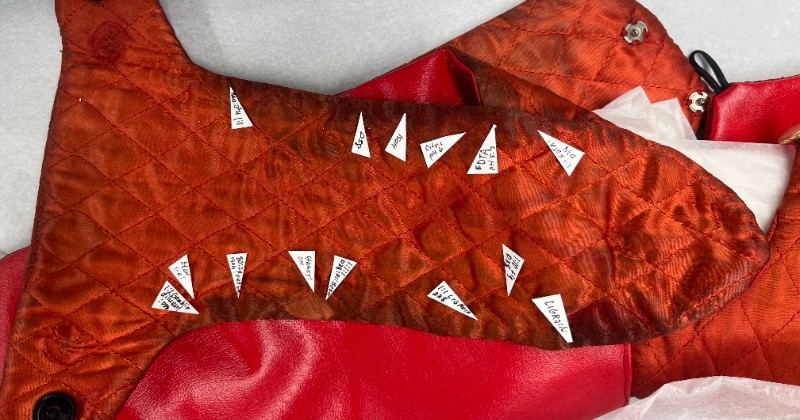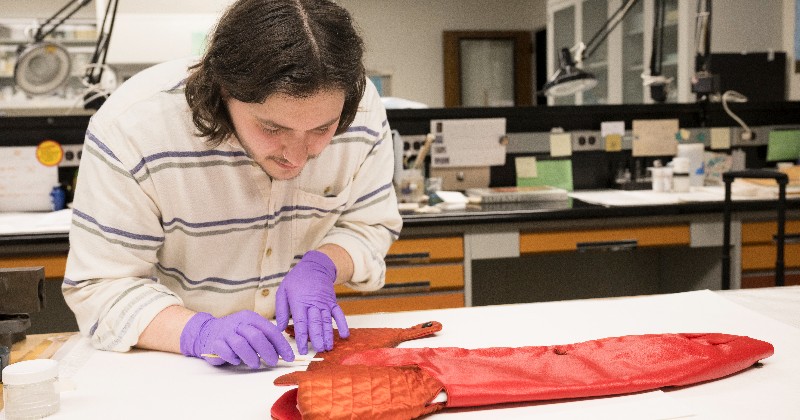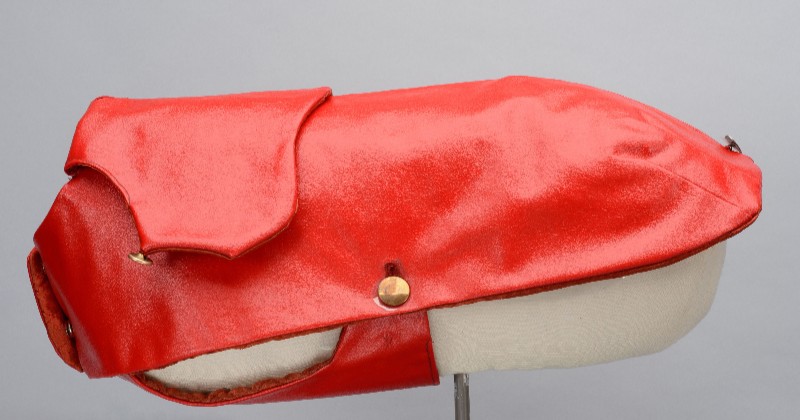
Category: Art Conservation

Art conservation and fragile fashions
August 12, 2025 Written by Lisa Chambers | Kathy Atkinson
Growing up in Philadelphia with a small bichon poodle—complete with her own raincoat—Luca Denegre never imagined he would one day preserve a similar canine parka for posterity. This year, the second-year objects major in the Winterthur/University of Delaware Program in Art Conservation (WUDPAC) worked on a stylish red 1960s dog jacket for his science research project. An art school graduate who previously handled outdoor sculpture at the Hirshhorn Museum and Sculpture Garden and Egyptian sculpture at the Penn Museum, Denegre had requested an object made from “nasty plastic”—notoriously unstable materials such as polyvinyl chloride (PVC)—and he got his wish.
The coat was donated to Winterthur Museum, Garden & Library’s plastics study collection by the Chicago History Museum. The staff had deaccessioned the piece because “it was starting to ooze this mysterious liquid,” Denegre said. The small jacket “was oily on the surface, and the lining was quite stained inside. It was also being stored flat, with just some tissue paper in a tray. It wasn’t clear what it was.”
Denegre’s first challenge was to identify the object’s components so he could clean them safely. After taking a small sample and using Fourier transform infrared spectroscopy (FTIR), he determined that the shiny outer layer was likely PVC that had begun to ooze plasticizer—a clear sign of degradation. The lining proved to be cellulose acetate, a synthetic textile requiring gentle cleaning, and the buttons turned out to be casein formaldehyde, “a type of plastic made from milk proteins,” he said. He ran more than 20 spot tests to find a solvent that would safely and effectively clean the synthetic textile. The coat brightened, and although it will continue to degrade, he noted, “we can keep it in a cooler environment with fewer temperature fluctuations, and we hope that will help slow the deterioration.”

He also performed minor stitching, stabilized tears in the lining and created a custom storage mount that mimics a dog’s form. “The foam for the display is from the leg of a previous mannequin of Winston Churchill,” he recalled with a laugh.
Denegre also investigated the raincoat’s cultural history, tracking down 1960s sewing patterns for dog clothing. “There weren’t a lot of dog raincoats in museum collections,” he said, “so what I could find was these patterns—and newsreels of dog fashion shows, which was very bizarre but fun to look into.” As a first deep dive into synthetic materials, the project left him eager for more. “It was very satisfying,” he said. “You’re doing original research, and you have to figure things out on your own.”


